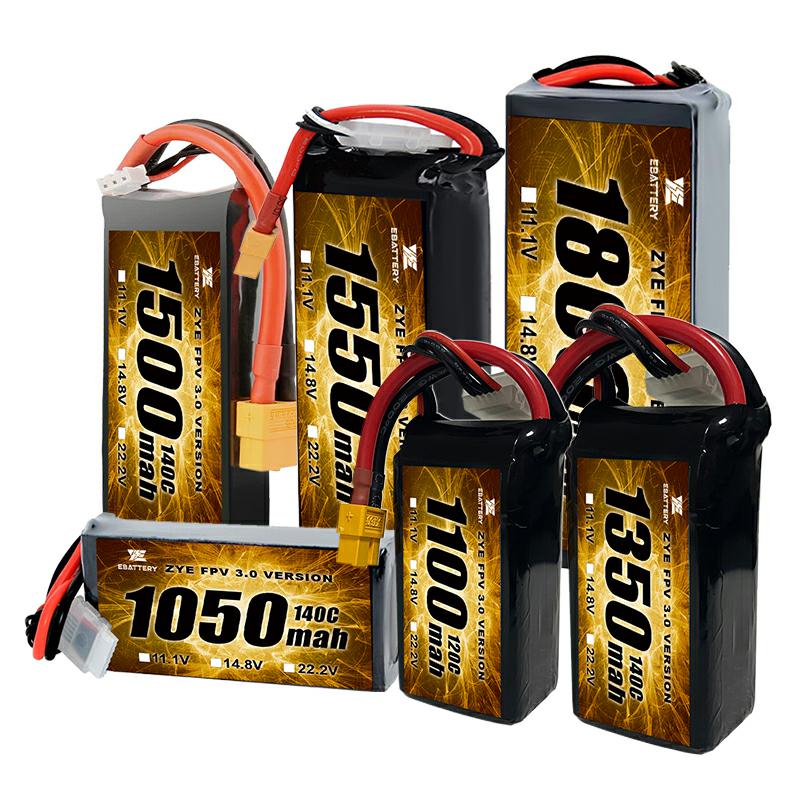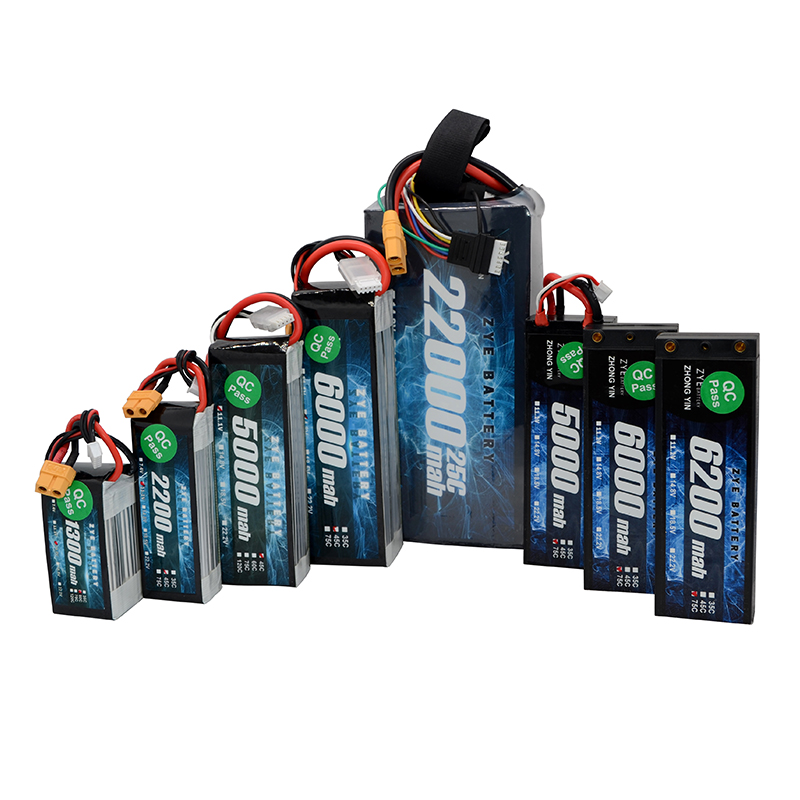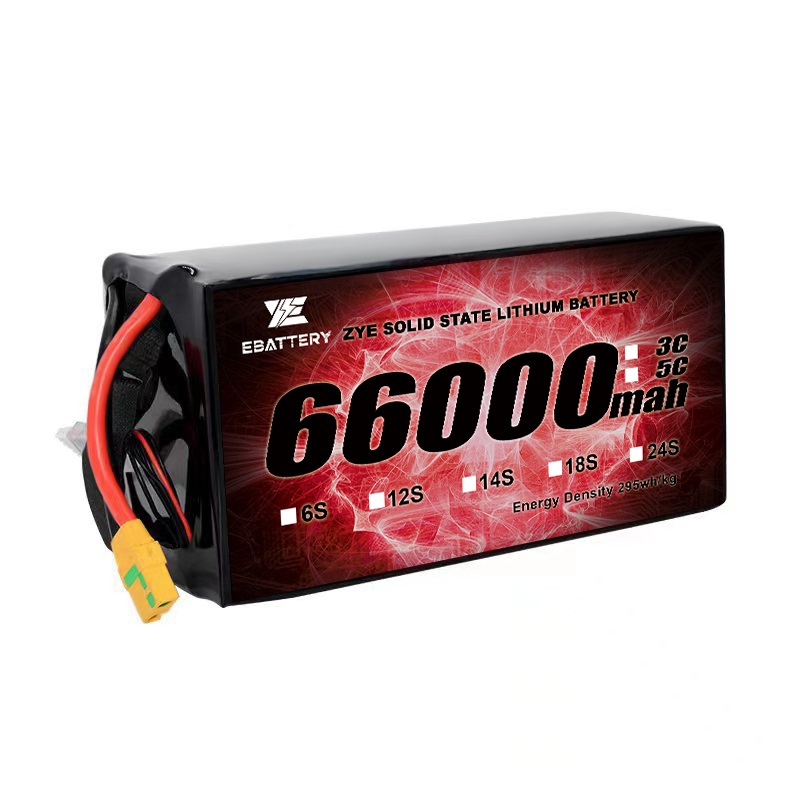How to choose drone batteries in different application scenarios?
2025-09-30
Drone batteries have found diverse applications across various industries. Aerial photography demands lightweight solutions, crop protection requires high-load endurance, and inspection tasks necessitate low-temperature resistance. The core requirements of these distinct scenarios directly dictate the battery type, parameters, and design direction.

I. Consumer Aerial Photography: Lightweight + Balanced Endurance as Core Requirements
Application Scenario: Primarily flown in urban areas and scenic spots. Airframe weight must be kept under 250g. A single flight lasting 20-40 minutes is sufficient. Priority is given to balancing portability with stable power supply for image quality.
Parameters: Capacity 2000-5000mAh, voltage 11.1V (3 cells in series) or 22.2V (6 cells in series), discharge rate 5-10C (sufficient for low-to-medium load operation of aerial photography motors);
II. Agricultural Plant Protection: High Discharge + Heat Resistance + Long Cycle Life are Key
Application Requirements: Complex field environments (high temperatures, dust, pesticide corrosion) require supporting drones carrying full pesticide loads (10-30kg) for continuous 20-30 minute flights, with batteries enduring frequent charge/discharge cycles.
Suitable Battery Characteristics:
Type: Primarily lithium polymer cells, featuring high temperature resistance (operating range -10°C to 60°C), enhanced safety (puncture-resistant, non-flammable/non-explosive), and 800-1000 cycle life;
Parameters: Capacity 10,000-20,000mAh, voltage 22.2V (6 cells in series) or 51.8V (14 cells in series), discharge rate 15-25C. Must support high-load operation of plant protection motors and prevent crashes during pesticide-loaded takeoff.
Design: Corrosion-resistant ABS housing with IP54 waterproof rating (resistant to pesticide splashes), enhanced BMS system with overcurrent protection.
III. Patrol Mapping: Prioritizing Cold Resistance + Long Endurance + High Safety
Operational Requirements: Frequent deployment in high-altitude (-20°C and below) and remote areas. Single patrols cover 5-10 km routes, demanding batteries with cold resistance, extended endurance, and safety assurance in high-voltage environments.
Specifications: Capacity 8000-15000mAh, Voltage 22.2V-44.4V, Discharge Rate 10-15C, Energy Density 220-250Wh/kg (single-charge runtime 40-60 minutes);
Design: Reinforced aluminum alloy casing (impact-resistant), BMS with “low-temperature preheating function” (-30°C startup capability), supports “precise power calculation” (error ≤3% to prevent mid-inspection shutdowns)
IV. Logistics & Distribution: Core Focus on High Energy Density + Weight Optimization
Application Requirements: Must simultaneously carry cargo (0.5-2kg) and batteries within limited takeoff weight constraints, ensuring endurance (30-50 minutes) while minimizing battery volume.
Parameters: Capacity 5000-10000mAh, voltage 14.8V (4 cells in series), discharge rate 8-12C, weight controlled at 0.5-1kg (10%-20% of total takeoff weight);
Design: Compact size, reverse-polarity protection on connectors (preventing battery swap errors), dual “fast + slow charging” modes—rapid daytime charging for quick replenishment, slow nighttime charging for extended lifespan.
V. Emergency Rescue: Rapid Charge/Discharge + Impact Resistance are Essential
Scenario Requirements: In emergencies like earthquakes or floods, drones must launch within 5 minutes and perform frequent takeoffs/landings. Batteries must withstand drops, support high-current fast charging, and operate in wet/muddy environments.
Parameters: Capacity 3000-8000mAh, Voltage 11.1V-22.2V, Discharge Rate 15-20C (for rapid takeoff power), supports “20-minute fast charge to 80%”;
Design: IP67 waterproof rating (withstands brief submersion), includes “emergency power supply port”.
Summary: Core Logic for Scenario Selection
Environment: Choose temperature-resistant batteries for extreme cold/heat; select high protection ratings for damp/corrosive environments.
Load: Opt for high discharge rate batteries for heavy payloads (crop protection, logistics); choose balanced models for light loads (aerial photography).
Frequency: High-frequency use (crop protection, inspections) requires long-cycle-life LiFePO₄ batteries; low-frequency use (aerial photography, emergency) requires high-energy-density ternary lithium batteries.
Selecting the right battery for the application not only maximizes drone performance but also reduces failure risks and operating costs—after all, the best “power partner” is the one that fits perfectly.
























































